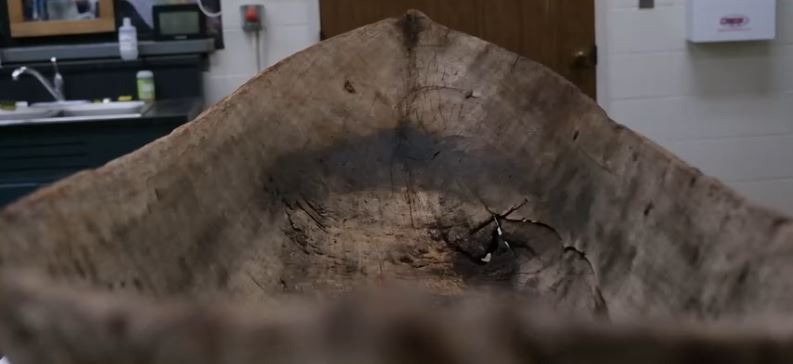Historic canoe washed up by Hurricane Ian: ‘Very unusual’

By Evan Dean
Click here for updates on this story
FORT MYERS, Florida (WBBH) — When Hurricane Ian hit in 2022, the Caloosahatchee River flowed inside homes on East Riverside Drive.
Storm surge poured through the Fort Myers neighborhood like an angry stream.
“It’s really intense. It moves everything,” Jon Iglehart said to Gulf Coast News in 2024. “There’s really no stopping wave action and wind.”
Iglehart owns a rental in the neighborhood. Ian washed all sorts of debris onto his property: everything from old family photos to a small coffin.
But of everything he found, one discovery took a little more digging.
“This fence had been pushed down and had a huge pile of debris over it,” Iglehart said on his property. “As we were going through the debris, removing it, under a grandfather clock was this canoe that was kind of pushed into the ground.”
And not just any canoe: a historic one.
A single-log dugout canoe.
“We have no idea where it came from,” Iglehart said. “I come from a family of antiquers. So it’s like, ‘Wow, this is pretty cool. This is awesome. This is quite an object — and it probably has some significance.'”
Last year, Iglehart donated the canoe to the state. It’s been in Tallahassee at the Florida Division of Historical Resources ever since, as the team there works to learn more about it.
Gulf Coast News visited last year to do the same.
Fast forward to now — a year later. After working to clean and preserve the canoe, conservation is complete.
“It’s everyone’s history, right? And so I think that’s important,” Sam Wilford said.
Wilford, the deputy state archaeologist, caught Gulf Coast News up to speed on the progress.
If you thought the mystery of the canoe was fascinating before, it’s even bigger now.
“There’s two things about the canoe that make it very unusual, and the first one is its shape,” Wilford said. “It’s quite small for a canoe, it’s 9 feet long. But it’s also very canoe-like. It looks like a modern shape of a canoe, which is not typical of a dugout canoe, or Native American pre-contact canoe, which looks more like a log.”
Also unusual is the type of wood, which the team uncovered after sending out a sample.
“The University of Georgia tested that. And actually discovered it was made of mahogany. And so, this is the first mahogany canoe that we have in the collection. And in fact, the first mahogany canoe recorded in Florida,” Wilford said.
Almost all historic canoes found in Florida are traced to either the Calusa Indians or the Seminole or Miccosukee tribes, all of whom lived in the state.
But this canoe, researchers wonder, may have had a longer journey to get to Fort Myers.
“We know that mahogany is native to South Florida. But it’s also native to the Caribbean,” Wilford said. “And because of that form, looking at the form and looking at examples that we see in the Caribbean, it could be from the Caribbean. That’s a possibility.”
If it is, how it got to Fort Myers could be the biggest mystery yet.
It’s one Wilford and his team may never be able to solve for certain.
For now, the work to uncover its origins will continue.
“Our collection is the public’s collection. We get it out there to learn and to teach is our main mission,” Wilford said. “I think that’s why people are passionate, clearly passionate about things like canoes and other objects that we have in our collection. It’s everyone’s shared collective history.”
Researchers have also tested the age of the wood, which came back to the 1300s or 1400s. That raises even more questions, because that era pre-dates some of the tools used on the canoe.
There is a 3D image of the canoe online for you to explore.
This story was provided to CNN Wire by an affiliate partner and does not contain original CNN reporting.
Please note: This content carries a strict local market embargo. If you share the same market as the contributor of this article, you may not use it on any platform.